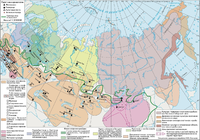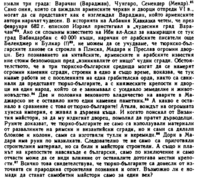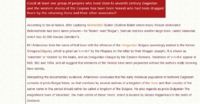Патолошката потреба на нетуркиските источнобалкански народи по секоја цена да се идентификувaат како огурски (туркиски) Бугари
- Креатор на темата 121314
- Време на започнување
- Член од
- 3 септември 2010
- Мислења
- 6.704
- Поени од реакции
- 9.307
- Член од
- 3 септември 2010
- Мислења
- 6.704
- Поени од реакции
- 9.307
Eве во Софија што тврдат:


Какви прадеди на турко-бугарските племиња од Андроновската Култура? Зошто бладате?
Еве ви за Андроновската Култура од релевантни извори:



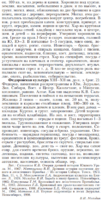






Хиперборејците од Централна Азија биле европеиди (предци на Таџиците). Последователно, целото племе на индоевропската раса на Централна Азија и Иран (Персијци, Скити, Масагети, Хорезмијци, Согдијци, Бактријци, Кушани, Партијци и Хефталити) е со европеидно потекло. Главното население на Ахеменидската држава, Партиската држава, Кушанската држава, Сасанидската држава, па сè до Саманидската држава и нивните народности биле народите од индо-иранската раса, во најширока смисла на зборот - индоевропската раса. Тоа се предците на сегашните Персиско-Таџички народи.
Рускиот историчар и писател Ј.Д. Петухов вели дека Централна Азија била населена со кавказоиди (европеиди), бореали, главно од брахицефаличен тип (Тајните на Древните Руси. Москва, Вече, 2007, стр. 380). Според концептот на Ј.Д.Петухов, од татковината на Индоевропејците (Јужна Русија) произлегле предците на Иранците и предците на старите Индији, т.е. Аријци. Подоцна тие станале Иранци и Индијци. И повторно се поставува прашањето: кои се тие - Аријци? Самите Иранци и самите древни Индијци сочувале спомени за својата татковина, за Аријана Веџа, т.е. Ариевското пространство, но Персијците го нарекуваат „Иранвеџ“ и Ариварти - земјата на Аријците, земјата на благородниците. Арии или Аријци - име на група индоевропски, прото-индо-ирански народи кои живееле во Бронзеното Доба во степите на Евроазија, јужните степи на Русија и се преселиле во II милениум пред нашата ера во Иран и Индија.
Името доаѓа од санскритскиот и иранскиот збор арии - аруа - благородни. Несомнено, пророкот на ариевската раса е Заратуштра, родум од Согд. Инаку, света книга на зороастријците е Авеста напишана на авестиски јазик. Според Авестата и „Книгата на царевите“ - „Шахнаме“ од Фирдуси, најзастапени племиња се Ариите (Аријците), Турите (Туранците и потомците на Саримите. Аријците и Туранците на исток, соодветно, може да се сметаат за модерни Персијци, Таџики, Бахтијари, Балучи, Осетијци, Даријци, Аријци од Хиндустан. Потомците на Саримите се современите Руси и Словени.
 centrasia.org
centrasia.org







@roden, @Trakiya, видовте ли чии биле Андроновските култури или и понатаму ќе допуштате официјална Софија со своите фалсификати да ве влече за нос?


Какви прадеди на турко-бугарските племиња од Андроновската Култура? Зошто бладате?
Еве ви за Андроновската Култура од релевантни извори:










Хиперборејците од Централна Азија биле европеиди (предци на Таџиците). Последователно, целото племе на индоевропската раса на Централна Азија и Иран (Персијци, Скити, Масагети, Хорезмијци, Согдијци, Бактријци, Кушани, Партијци и Хефталити) е со европеидно потекло. Главното население на Ахеменидската држава, Партиската држава, Кушанската држава, Сасанидската држава, па сè до Саманидската држава и нивните народности биле народите од индо-иранската раса, во најширока смисла на зборот - индоевропската раса. Тоа се предците на сегашните Персиско-Таџички народи.
Рускиот историчар и писател Ј.Д. Петухов вели дека Централна Азија била населена со кавказоиди (европеиди), бореали, главно од брахицефаличен тип (Тајните на Древните Руси. Москва, Вече, 2007, стр. 380). Според концептот на Ј.Д.Петухов, од татковината на Индоевропејците (Јужна Русија) произлегле предците на Иранците и предците на старите Индији, т.е. Аријци. Подоцна тие станале Иранци и Индијци. И повторно се поставува прашањето: кои се тие - Аријци? Самите Иранци и самите древни Индијци сочувале спомени за својата татковина, за Аријана Веџа, т.е. Ариевското пространство, но Персијците го нарекуваат „Иранвеџ“ и Ариварти - земјата на Аријците, земјата на благородниците. Арии или Аријци - име на група индоевропски, прото-индо-ирански народи кои живееле во Бронзеното Доба во степите на Евроазија, јужните степи на Русија и се преселиле во II милениум пред нашата ера во Иран и Индија.
Името доаѓа од санскритскиот и иранскиот збор арии - аруа - благородни. Несомнено, пророкот на ариевската раса е Заратуштра, родум од Согд. Инаку, света книга на зороастријците е Авеста напишана на авестиски јазик. Според Авестата и „Книгата на царевите“ - „Шахнаме“ од Фирдуси, најзастапени племиња се Ариите (Аријците), Турите (Туранците и потомците на Саримите. Аријците и Туранците на исток, соодветно, може да се сметаат за модерни Персијци, Таџики, Бахтијари, Балучи, Осетијци, Даријци, Аријци од Хиндустан. Потомците на Саримите се современите Руси и Словени.
Узбеки и таджики... сарты и тюрки. Искажение истории. Ч. 1, - С.Бекзода
Узбеки и таджики... сарты и тјурки. Искажение истории. Ч. 1, - С.Бекзода | Новости Центральној Азии







@roden, @Trakiya, видовте ли чии биле Андроновските култури или и понатаму ќе допуштате официјална Софија со своите фалсификати да ве влече за нос?
Последно уредено:
- Член од
- 3 септември 2010
- Мислења
- 6.704
- Поени од реакции
- 9.307




| Map of Central Asia - Turkic expansion AD 300-600 |
| Turkic origins are hard to pin down precisely, but the region around the Altai Mountains would seem to have served as a general incubator during their development, probably in the millennium prior to their appearances from the fourth century onwards. Historical accounts of groups such as the Wusun provide clear clues to those origins. This would have allowed them - potentially - to pick up a proto-Mongol or Tungusic influence while also leaving then extremely open to the heavy Indo-Iranian influences which can be seen in their personal and tribal names. Next to them, and on the northern edges of the civilised zone of eastern Iran, was the probable incubator zone for the proto-Bulgaro-Turks. This group, even more heavily influenced by Indo-Iranians, included Onogur-Bulgars and the many other tribes which could be found on the Pontic steppe in the seventh century AD, plus it almost certainly included the Kidarites who would lead the nearby Hephthalites down into eastern Iran to conquer much of it. The origins of the Göktürks, sometimes acclaimed as being the first true Turks, lies in their presence as the Ashina tribe in eastern Gansu in AD 439. This location is easily reached from the Turkic incubator zone via a corridor which was under Sui dynasty control by the seventh century. The Ashina were forced to return the way they had probably come so that, by AD 508 they could be found around Gaochang and under Rouran khaganate control. They would overthrow the Rouran in AD 552 to create an empire. |
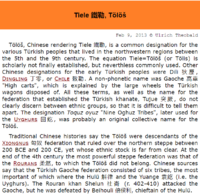

Tiele 鐵勒, Tölöš (www.chinaknowledge.de)
Tölöš, Chinese rendering Tiele 鐵勒, is a common designation for the various Türkish peoples that lived in the northwestern regions between the 5th and the 9th century.


The Identity of the Xionites
It appears that not all Huns were of the same stock - the White Huns (Hephthalites) especially appear to have been formed of a very different group of people.
- Член од
- 3 септември 2010
- Мислења
- 6.704
- Поени од реакции
- 9.307







| Map of Eastern Europe AD 632-665 |
| The Onogur-Bulgar confederation became more powerful following the mutual annihilation of the Kutrigurs (Kotraks on the map) and Utigurs. In AD 632 Qaghan Koubrat came to power as the head of this confederation and three years later he was able to throw off Avar domination and found Great Bulgaria (the plain brown section located around the Sea of Azov on the map, above). The confederation expanded greatly in 638 (shown by the diagonal brown bars on the map), mostly due to the Avars buckling in the west while the Göktürks were at the limits of their power on the Volga and they rarely ventured beyond that border. Twenty-two years of dominance followed, but Koubrat died around 651 and, by 660, the Khazars and Avars were pressing against its borders, causing a degree of shrinkage (the dashed black line on the map). More territory was lost in 665, especially on the west bank of the Dniepr (the dotted black line on the map). The end came in 668 when Koubrat's son and successor gave in to Khazar domination. |
Последно уредено:
- Член од
- 3 септември 2010
- Мислења
- 6.704
- Поени од реакции
- 9.307
- Член од
- 3 септември 2010
- Мислења
- 6.704
- Поени од реакции
- 9.307


| Map of Eastern Europe AD 450-500 |
| Soon after the middle of the fifth century AD the Hunnic empire crashed into extinction, starting with the death of Attila in 453. His son and successor, Ellac, was killed in battle in 454, and the Huns were defeated by the Ostrogoths in 456, ending Hunnic unity. Attila's remaining sons fought amongst themselves for supremacy and ended up controlling only fragments of territory. Having been dragged westwards by the Huns and soon to be forced westwards by the sudden supremacy in the east of the Göktürks, Turkic tribes were continuing to build in number on the Pontic-Caspian steppe. The Bulgars were seemingly one of the first of these large groups to arrive. They were joined there by two major groups from the Hunnic empire, the Kutrigurs and Utigurs, with the latter often being used by the Eastern Romans to keep the former in line. Other Hunnic remnants remained in the western core of the former empire's territory, Dacia (shown) and Pannonia (off to the left of the map), which included Huns, Turks, Indo-Iranians, Germanics, Celts, and even Romans. |






| Map of Central Asia AD 550-600 |
| As was often the case with Central Asian states which had been created by horse-borne warriors on the sweeping steppelands, the Göktürk khaganate swiftly incorporated a vast stretch of territory in its westwards expansion, whilst being hemmed in by the powerful Chinese dynasties to the south-east and Siberia's uninviting tundra to the north. |

















